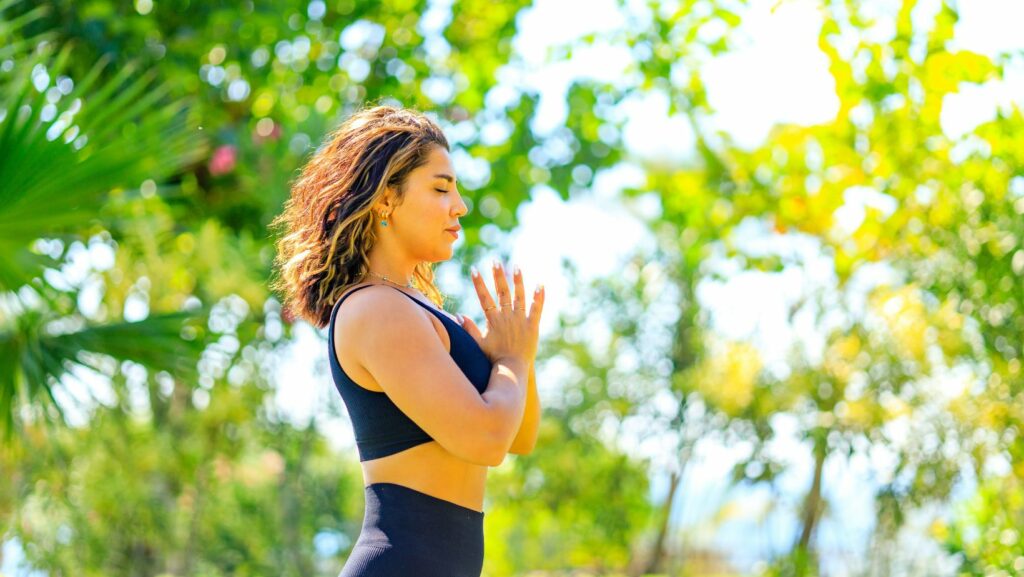In the bustling whirlwind of modern life, the harmony between breath, body, and mind often gets overlooked. Yet, it’s the cornerstone of well-being, the secret ingredient to a healthier, happier existence. This article explores the profound connection between these three elements and how they shape our daily lives.Harnessing the power of breath, understanding our bodies, and taming the mind can transform our experiences. From stress management to boosting productivity, the benefits are immense. So, let’s embark on a journey to discover the wonders of synchronizing breath, body, and mind, and unlock the secret to a more balanced life.
Breathe Body And Mind
The Science Behind the Connection
 Scientific investigations repeatedly show significant associations between our breath, body, and mind. These critical elements intertwine, forming a system that influences well-being immensely. Over time, research in fields like psychology, physiology, and neuroscience has shed light on their remarkable interconnectedness.Breathing, for instance, profoundly affects our nervous system. With every inhale and exhale, messages get transmitted to the brain, influencing mood, stress levels, and even perception of pain. Altogether, breathing techniques like deep, controlled breaths activate the body’s relaxation response, ultimately meditation and mindfulness practices work on similar mechanisms, enhancing cognitive function, fostering emotional resilience, and promoting overall mental well-being.
Scientific investigations repeatedly show significant associations between our breath, body, and mind. These critical elements intertwine, forming a system that influences well-being immensely. Over time, research in fields like psychology, physiology, and neuroscience has shed light on their remarkable interconnectedness.Breathing, for instance, profoundly affects our nervous system. With every inhale and exhale, messages get transmitted to the brain, influencing mood, stress levels, and even perception of pain. Altogether, breathing techniques like deep, controlled breaths activate the body’s relaxation response, ultimately meditation and mindfulness practices work on similar mechanisms, enhancing cognitive function, fostering emotional resilience, and promoting overall mental well-being.
Benefits for Holistic Health
Understanding the connection between breath, body, and mind, results in not just an increase in physical health benefits, but ones that extend to mental and emotional wellness. Regular practice of conscious breathing, yoga, and mindfulness exercises brings a host of advantages, creating a holistic approach to health.For our bodies, this routine accelerates recovery from physical stressors, enhances sleep quality, boosts energy levels, and can even aid digestion. Moreover, improved mental health becomes apparent through reduced anxiety, sharper concentration, and elevated mood. Emotionally, one starts experiencing greater self-awareness, increased emotional intelligence, and a deeper sense of inner peace.
Breathing Techniques for a Balanced Life
 Building on the concept of the interwoven nature of breath, body, and mind, this section provides an overview of specific breathing techniques that may aid in achieving balance and wellness.Deep breathing serves as a major catalyst in fostering relaxation and decreasing stress. According to the American Institute of Stress, deep breathing encourages full oxygen exchange, reduces heart rate, and banishes stress-producing hormones.Techniques like diaphragmatic breathing and 4-7-8 breathing fall into this category.Diaphragmatic breathing encourages deeper breath intake, leveraging the diaphragm rather than respiratory muscles in the chest. Studies indicate that implementing this breathing pattern can diminish respiratory stress, in turn lowering heart rate and promoting relaxation.
Building on the concept of the interwoven nature of breath, body, and mind, this section provides an overview of specific breathing techniques that may aid in achieving balance and wellness.Deep breathing serves as a major catalyst in fostering relaxation and decreasing stress. According to the American Institute of Stress, deep breathing encourages full oxygen exchange, reduces heart rate, and banishes stress-producing hormones.Techniques like diaphragmatic breathing and 4-7-8 breathing fall into this category.Diaphragmatic breathing encourages deeper breath intake, leveraging the diaphragm rather than respiratory muscles in the chest. Studies indicate that implementing this breathing pattern can diminish respiratory stress, in turn lowering heart rate and promoting relaxation.
Physical Exercises to Enhance Body Awareness
Integrating mindful practices into physical activity fosters an improved perception of the body. Two such physically engaging activities include yoga and dynamic exercises, helping individuals further explore the relationship between breath, body, and mind.
Yoga and Breath Coordination
 Yoga, a discipline acclaimed for its ability to unite body and mind, employs breathing coordination as a pivotal part of its practice. The technique, commonly known as pranayama in yoga terminology, involves precise breath control, enhancing both physical and mental well-being. One specific type, alternate nostril breathing, involves inhaling through one nostril and exhaling through the other. It’s been noted by Healthline for its ability to reduce heart rate and stress levels. Similarly, Ujjayi breath, or ocean breath, is another example. Characterized by its distinctive sound, the method involves inhaling deeply through the nose and exhaling slowly, while slightly constricting the back of the throat. According to the Yoga Journal, practicing this form of pranayama promotes calmness and enhances overall focus.
Yoga, a discipline acclaimed for its ability to unite body and mind, employs breathing coordination as a pivotal part of its practice. The technique, commonly known as pranayama in yoga terminology, involves precise breath control, enhancing both physical and mental well-being. One specific type, alternate nostril breathing, involves inhaling through one nostril and exhaling through the other. It’s been noted by Healthline for its ability to reduce heart rate and stress levels. Similarly, Ujjayi breath, or ocean breath, is another example. Characterized by its distinctive sound, the method involves inhaling deeply through the nose and exhaling slowly, while slightly constricting the back of the throat. According to the Yoga Journal, practicing this form of pranayama promotes calmness and enhances overall focus.
Dynamic Movements for Energy Flow
Dynamic exercises, typified by fluid body movements, are yet another method to enhance body awareness. Examples include Tai Chi and Qigong. These disciplines engender a seamless energy flow within the body, fostering improved coordination, balance, and body awareness. A study published in the Journal of Aging and Physical Activity correlates Tai Chi practice with a significant improvement in proprioceptive sensitivity, essentially the body’s ability to determine its position in space. Additionally, Qigong’s focus on postures, movements, and breathing is known to regulate energy flow and increase mindfulness, according to a publication from the National Qigong Association.

